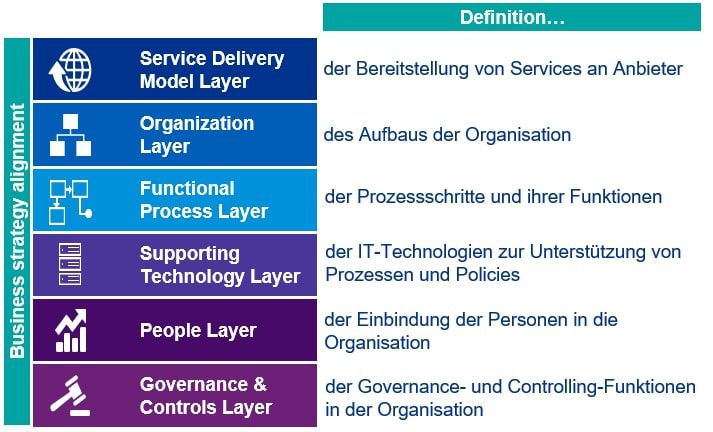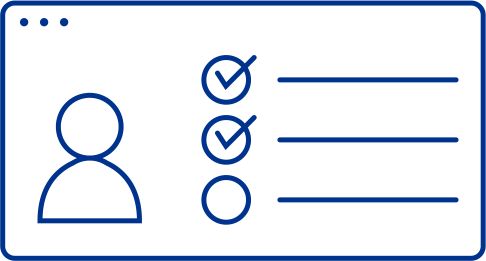The HR function is increasingly coming into focus in the course of the corporate and digital transformation. Changing demands that employees place on their workplace and the “competition for talent” require a change in thinking of business entities and also of HR departments.
Chart (in German only)

The Target Operating Model (TOM) is the basis for a successful HR transformation and thus future-oriented alignment of the entire HR organisation. In the TOM, the following six levels are intensively analysed and optimised: the HR service delivery model, the structural organisation, the workflows with HR processes, the HR IT technology, the employees and the responsibilities.
The degree of digitalisation is still very low in large parts of HR: 70% of the capacity utilisation of many HR departments is tied up with administrative tasks that do not add value to the business entity as a whole. Automating these manual processes frees up time for value-adding activities by HR staff and thus provides more support for the business entity.
In the first step, the automation of HR processes means harmonising and optimising HR processes and requires a detailed analysis of the existing processes and their “streamline”.
HR IT optimisation includes, for example, the integration of an innovative applicant tool and the introduction of the digital personnel file or an employee self-service (ESS) as well as a management self-service. The optimisation combines the Target Operation Model with HR IT support.
It also includes a change and realignment of the entire HR organisation through the creation of centres of expertise (COEs), for example, in the areas of marketing, recruitment, retention, controlling and personnel development, as well as the establishment of internal or even external shared service centres (SSCs). This can be a decisive factor for the strategic realignment of the organisation, provided that the necessary commitment of HR management, HR leaders and stakeholders in the business is ensured.
In addition to the mentioned optimisation levers, a change and realignment of the entire HR organisation through the creation of centres of expertise (COEs), for example, in the areas of marketing, recruiting, controlling or personnel development, is also included. The establishment of internal or even external shared service centres (SSCs) can also be a decisive factor for the strategic realignment of the organisation.
Chart (in German only)

Each optimisation approach is customised
We will be happy to work closely with you to find the right approach for your business entity. Here, we work together with experienced advisors from the HR environment and from industry as well as with experts in HR digitisation, and follow a structured process to identify and implement your needs.
Chart (in German only)

Your contacts
Marc Ennemann
Partner, Performance & Strategy, Enterprise Performance
KPMG AG Wirtschaftsprüfungsgesellschaft
Sascha Glemser
Partner, Performance & Strategy, Head of Enterprise Performance
KPMG AG Wirtschaftsprüfungsgesellschaft
Anne Hess-Lindmeyer
Senior Manager, Consulting, Value Chain Transformation, HR Transformation
KPMG AG Wirtschaftsprüfungsgesellschaft
Connect with us
- Find office locations kpmg.findOfficeLocations
- kpmg.emailUs
- Social media @ KPMG kpmg.socialMedia

